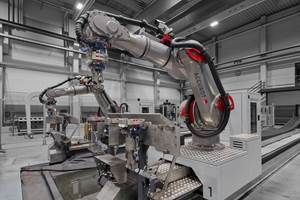Composites and 3D printing could boost Europe's SAT manufacturing capabilities for the 2030s
Clean Sky 2 SAT-AM project targets 4-hour, door-to-door mobility and reduced manufacturing, maintenance costs for 4-19 passenger, Small Air Transport.
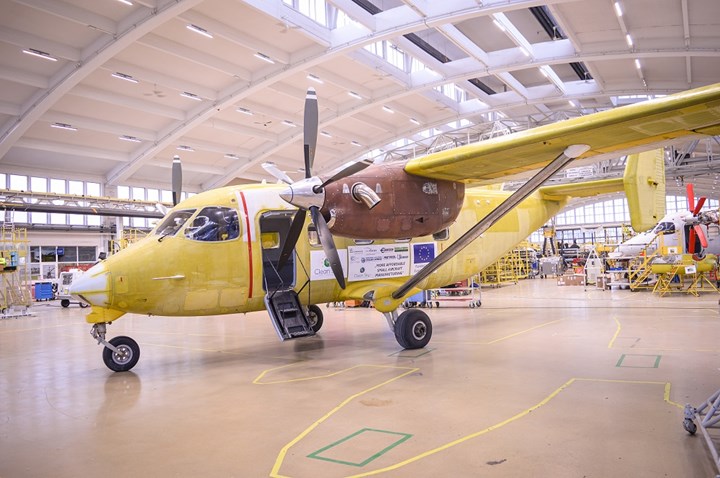
PZL Mielec, a Lockheed Martin Company, has conducted a flight test of the M28 aircraft with a novel composite engine nacelle as part of the Clean Sky 2 project SAT-AM (More Affordable Small Aircraft Manufacturing). Photo Credit: .
The Small Air Transport (SAT) category, defined as aircraft with between 4 and 19 passenger seats, is the technologically neglected niche of air travel— the Cinderella of aviation. Manufacturers have been hesitant to invest heavily in new technology here, due to the relatively low production volumes and the tight budgets of operators. Other factors are also at play: “The market for SAT aircraft is not so developed in Europe, nor elsewhere in the world, for several reasons,” says Clean Sky project officer Antonello Marino. “Technical and social barriers relating to passenger comfort, consumer perceptions around the safety compared to larger aircrafts, manufacturing, operating and recurring costs finally lead to high costs for passengers.”
Looking to the future, however, with major hubs reaching capacity, an opportunity is arising for those who recognize that regional aviation could experience a renaissance — if only SAT costs could be reduced using innovative technologies.
“Small air transport fulfills a market segment that cannot be filled by other types of aircraft, nor can be addressed by other modes of transport,” says Marino. “The Flightpath 2050 target of four-hour, door-to-door travel implies higher use of smaller aircraft. We have a large number of under-utilized regional airports in remote areas of Europe that are not suitable for large passenger aircraft but would be very suitable for smaller aircraft. So, in Clean Sky we decided to grant the SAT-AM project, which focuses on developing and testing advanced technologies that can reduce the manufacturing and maintenance costs of small aircraft.”
The five-year project, which runs until June 2021, is investigating a host of technologies that reduce the number of parts required for such aircraft and that also streamline manufacturing and assembly times. These technologies will be evaluated regarding their suitability for reducing costs in the SAT sector.
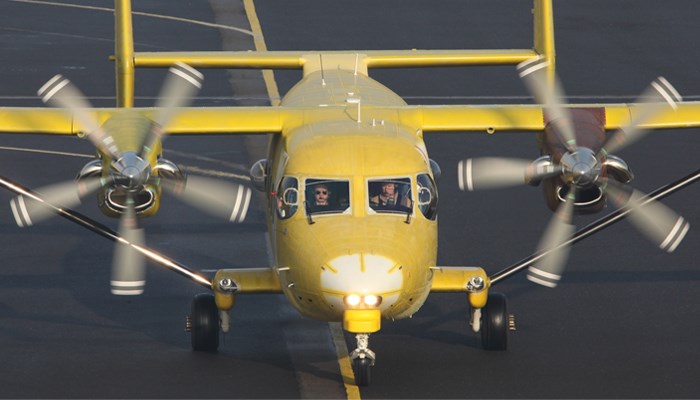
Photo Credit:
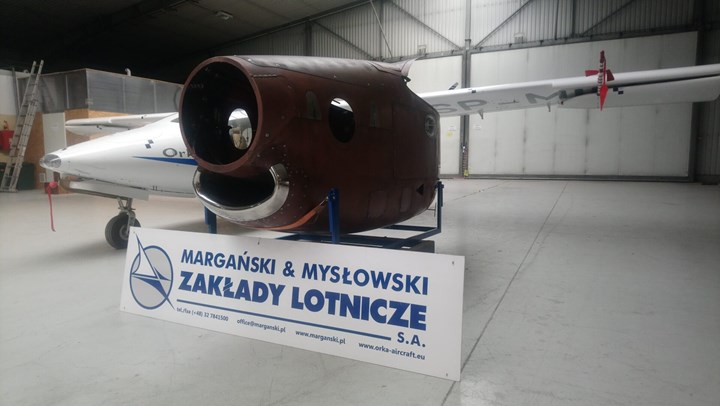
Zakłady Lotnicze is one of the consortium partners, helping to manufacture this engine nacelle using low-temperature, out-of-autoclave (OOA) prepregs for the production of aviation structures. Photo Credit:
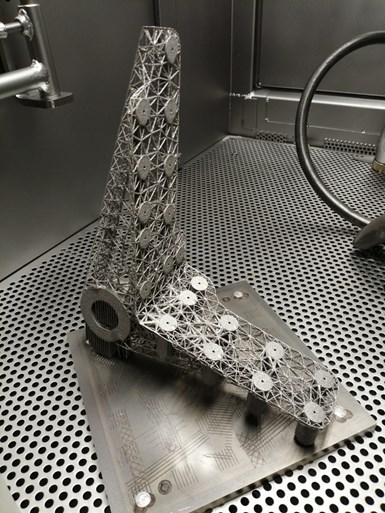
Lattice lug made by consortium partner using metal additive manufacturing. Photo Credit: Clean Sky 2 SAT-AM
Technologies and demonstrators
“Fuel consumption can be reduced by aerodynamic optimization of the aircraft element as well as technologies that will allow for weight reduction, while the energy consumption related to the manufacturing process can be addressed by manufacturing time optimization, through reducing machine-hours, or through the use of less energy-consuming manufacturing equipment,” says the coordinator of the project, Pawe┼é Gu┼éa, head of the Aviation Structures and Design Department at Poland's ┼üukasiewicz Research Network – Instytut Lotnictwa.
The technologies under investigation include: friction stir welding, additive manufacturing (3D printing), block structures, high-speed machining, composites, superhydrophobic coatings and structural health monitoring. The idea is to assess, downselect and validate, at aircraft level, the most relevant technologies through two full-scale demonstrators based on the PZL Mielec M28 short take-off and landing (STOL) aircraft. One demonstrator is the full-scale ground cabin demonstrator and the other is the engine nacelle flight demonstrator.
“Currently our first demonstrator, a fuselage cabin part, is in the final stage of assembly,” reports Gu┼éa. “The second demonstrator, an engine nacelle, passed static test. After that, Zak┼éady Lotnicze Marga┼äski & Mys┼éowski, in cooperation with project partners, has produced the second necelle dedicated for flight test stage. On December 2020, PZL Mielec successfully completed flight test with composite engine nacelle on M28 aircraft. It was a very important milestone in the Clean Sky 2 project, which aim is to develop innovative technologies for the manufacturing of the aircraft structures.”
From the Clean Sky perspective, Antonello Marino observes that some results are already available and are very promising. They were able to reduce the number of parts by more than 37%, to reduce weight by up to 10% and to reduce manufacturing costs by 26% by substituting joints and mechanical fasteners such as bolts and screws with new technologies in composites and additive manufacturing. Gu┼éa predicts that this initiative will greatly increase the competitiveness of the European aviation industry for smaller aircraft. “The results of the SAT-AM project will influence the revitalization of the small aircraft industry,” he says.
The consortium undertaking the project is composed of eight entities including: Sie─ç Badawcza ┼üukasiewicz – Instytut Lotnictwa; Polskie Zak┼éady Lotnicze; EUROTECH; SZEL-TECH Szeliga Grzegorz; P.W. “Metrol” Dariusz D─ůbkowski; ULTRATECH; ZAK┼üADY LOTNICZE Marga┼äski & Mys┼éowski; and Italian research entity CIRA. The project has already strengthened bonds between industry and academia, and Gu┼éa points out that five of the eight companies in the project consortium are small and medium enterprises (SMEs), who are focused on developing the technologies.
Related Content
First Airbus A350 crash confirmed in Haneda
Shortly after touch-down, a JAL A350-900 aircraft recently collided with a De Havilland Canada Dash 8. Exact circumstances are still unknown.
Read MoreAutomated robotic NDT enhances capabilities for composites
Kineco Kaman Composites India uses a bespoke Fill Accubot ultrasonic testing system to boost inspection efficiency and productivity.
Read MoreInfinite Composites: Type V tanks for space, hydrogen, automotive and more
After a decade of proving its linerless, weight-saving composite tanks with NASA and more than 30 aerospace companies, this CryoSphere pioneer is scaling for growth in commercial space and sustainable transportation on Earth.
Read MoreDevelopment of a composite liquid hydrogen tank for commercial aircraft
Netherlands consortium advances cryogenic composites testing, tank designs and manufacturing including AFP, hybrid winding, welding of tank components and integrated SHM and H2 sensors for demonstrators in 2025.
Read MoreRead Next
Next-gen fan blades: Hybrid twin RTM, printed sensors, laser shock disassembly
MORPHO project demonstrates blade with 20% faster RTM cure cycle, uses AI-based monitoring for improved maintenance/life cycle management and proves laser shock disassembly for recycling.
Read MoreCutting 100 pounds, certification time for the X-59 nose cone
Swift Engineering used HyperX software to remove 100 pounds from 38-foot graphite/epoxy cored nose cone for X-59 supersonic aircraft.
Read MoreUltrasonic welding for in-space manufacturing of CFRTP
Agile Ultrasonics and NASA trial robotic-compatible carbon fiber-reinforced thermoplastic ultrasonic welding technology for space structures.
Read More







